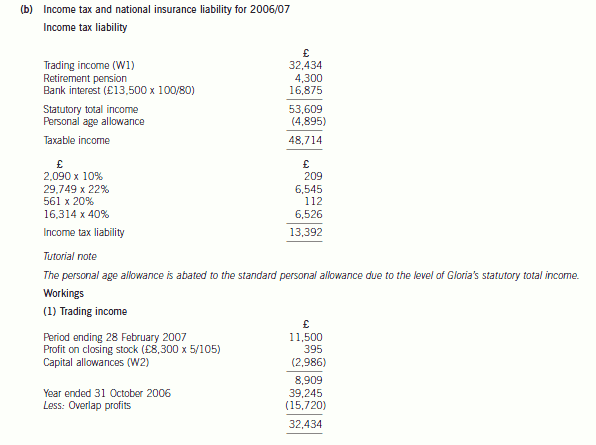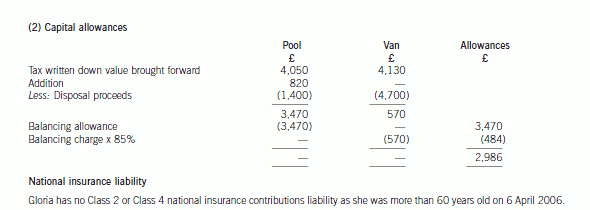ACCA考试是中文还是英文?
发布时间:2021-04-15
ACCA考试是中文还是英文?
最佳答案
ACCA考试没有中文的,ACCA是特许公认会计师,考试科目全部都是英文的,教材也是英文的。ACCA又分为机考和笔考。当然,不论机考还是笔考也都是全英文考试。
其实e799bee5baa6e997aee7ad94e4b893e5b19e31333431373935ACCA对英语的要求不算很高,一般考过四、六级的学生在看ACCA教材的时候不会有很大的困难。因为ACCA考试的词汇量其实很有限,看多了教材和做过了习题就会发现很多单词都是重复出现的,刚入门的时候会觉得他们很陌生,但是当一科完整学习下来以后你就能够非常熟悉这些单词和句式的表达了。建议大家平时多背背单词,语法忘光了的可以看看语法。学ACCA的时候有很多人英语成绩很差的也过了,其实就是多做题,找关键词。
下面小编为大家准备了 ACCA考试 的相关考题,供大家学习参考。
(b) Briefly discuss how stakeholder groups (other than management and employees) may be rewarded for ‘good’
performance. (4 marks)
(b) Good performance should result in improved profitability and therefore other stakeholder groups may be rewarded for ‘good
performance’ as follows:
– Shareholders may receive increased returns on equity in the form. of increased dividends and /or capital growth.
– Customers may benefit from improved quality of products and services, and possibly lower prices.
– Suppliers may benefit from increased volumes of purchases.
– Government will benefit from increased amounts of taxation.
(b) Discuss the key issues which will need to be addressed in determining the basic components of an
internationally agreed conceptual framework. (10 marks)
Appropriateness and quality of discussion. (2 marks)
(b) There are several issues which have to be addressed if an international conceptual framework is to be successfully developed.
These are:
(i) Objectives
Agreement will be required as to whether financial statements are to be produced for shareholders or a wide range of
users and whether decision usefulness is the key criteria or stewardship. Additionally there is the question of whether
the objective is to provide information in making credit and investment decisions.
(ii) Qualitative Characteristics
The qualities to be sought in making decisions about financial reporting need to be determined. The decision usefulness
of financial reports is determined by these characteristics. There are issues concerning the trade-offs between relevance
and reliability. An example of this concerns the use of fair values and historical costs. It has been argued that historical
costs are more reliable although not as relevant as fair values. Additionally there is a conflict between neutrality and the
traditions of prudence or conservatism. These characteristics are constrained by materiality and benefits that justify
costs.
(iii) Definitions of the elements of financial statements
The principles behind the definition of the elements need agreement. There are issues concerning whether ‘control’
should be included in the definition of an asset or become part of the recognition criteria. Also the definition of ‘control’
is an issue particularly with financial instruments. For example, does the holder of a call option ‘control’ the underlying
asset? Some of the IASB’s standards contravene its own conceptual framework. IFRS3 requires the capitalisation of
goodwill as an asset despite the fact that it can be argued that goodwill does not meet the definition of an asset in the
Framework. IAS12 requires the recognition of deferred tax liabilities that do not meet the liability definition. Similarly
equity and liabilities need to be capable of being clearly distinguished. Certain financial instruments could either be
liabilities or equity. For example obligations settled in shares.
(iv) Recognition and De-recognition
The principles of recognition and de-recognition of assets and liabilities need reviewing. Most frameworks have
recognition criteria, but there are issues over the timing of recognition. For example, should an asset be recognised when
a value can be placed on it or when a cost has been incurred? If an asset or liability does not meet recognition criteria
when acquired or incurred, what subsequent event causes the asset or liability to be recognised? Most frameworks do
not discuss de-recognition. (The IASB’s Framework does not discuss the issue.) It can be argued that an item should be
de-recognised when it does not meet the recognition criteria, but financial instruments standards (IAS39) require other
factors to occur before financial assets can be de-recognised. Different attributes should be considered such as legal
ownership, control, risks or rewards.
(v) Measurement
More detailed discussion of the use of measurement concepts, such as historical cost, fair value, current cost, etc are
required and also more guidance on measurement techniques. Measurement concepts should address initial
measurement and subsequent measurement in the form. of revaluations, impairment and depreciation which in turn
gives rise to issues about classification of gains or losses in income or in equity.
(vi) Reporting entity
Issues have arisen over what sorts of entities should issue financial statements, and which entities should be included
in consolidated financial statements. A question arises as to whether the legal entity or the economic unit should be the
reporting unit. Complex business arrangements raise issues over what entities should be consolidated and the basis
upon which entities are consolidated. For example, should the basis of consolidation be ‘control’ and what does ‘control’
mean?
(vii) Presentation and disclosure
Financial reporting should provide information that enables users to assess the amounts, timing and uncertainty of the
entity’s future cash flows, its assets, liabilities and equity. It should provide management explanations and the limitations
of the information in the reports. Discussions as to the boundaries of presentation and disclosure are required.
(b) Compute Gloria’s total income tax and national insurance liability for 2006/07. (7 marks)


声明:本文内容由互联网用户自发贡献自行上传,本网站不拥有所有权,未作人工编辑处理,也不承担相关法律责任。如果您发现有涉嫌版权的内容,欢迎发送邮件至:contact@51tk.com 进行举报,并提供相关证据,工作人员会在5个工作日内联系你,一经查实,本站将立刻删除涉嫌侵权内容。
- 2021-11-13
- 2021-01-05
- 2021-06-13
- 2021-03-12
- 2021-01-02
- 2021-03-10
- 2021-03-10
- 2021-03-11
- 2021-03-13
- 2021-03-12
- 2021-12-31
- 2021-06-04
- 2021-03-11
- 2021-01-02
- 2021-01-04
- 2021-02-15
- 2021-03-13
- 2021-04-15
- 2021-04-24
- 2021-12-31
- 2021-05-13
- 2021-04-24
- 2021-04-15
- 2021-03-13
- 2021-04-16
- 2021-03-10
- 2021-03-11
- 2021-03-10
- 2021-04-15
- 2021-04-23